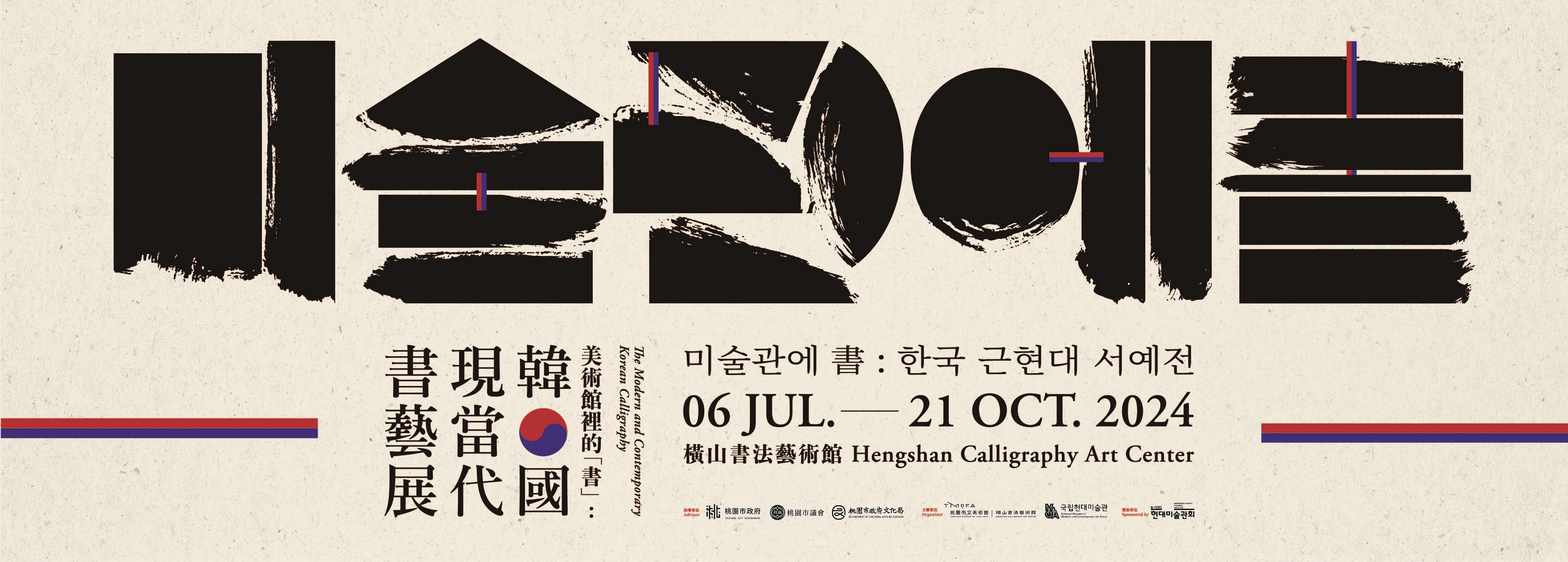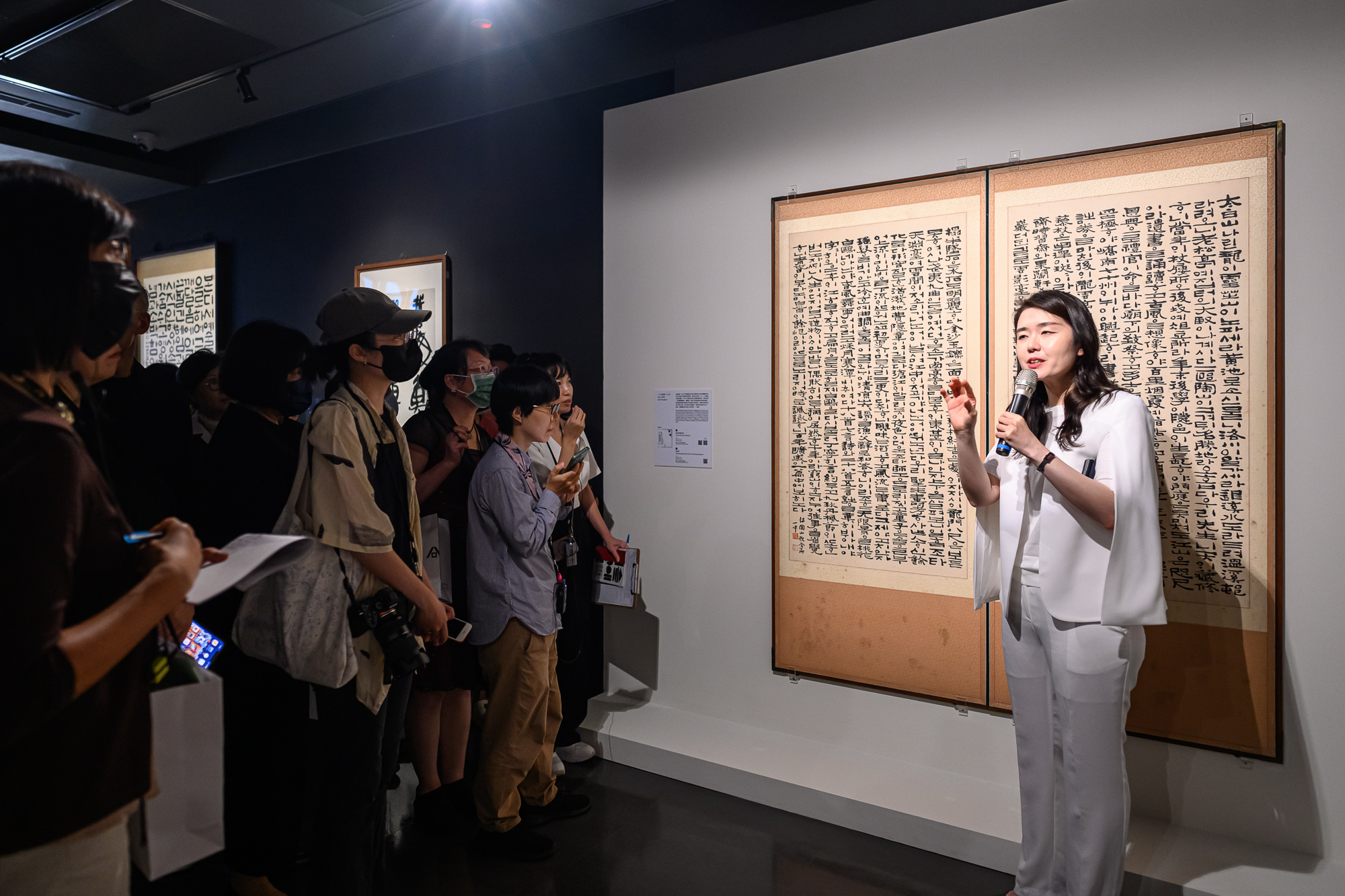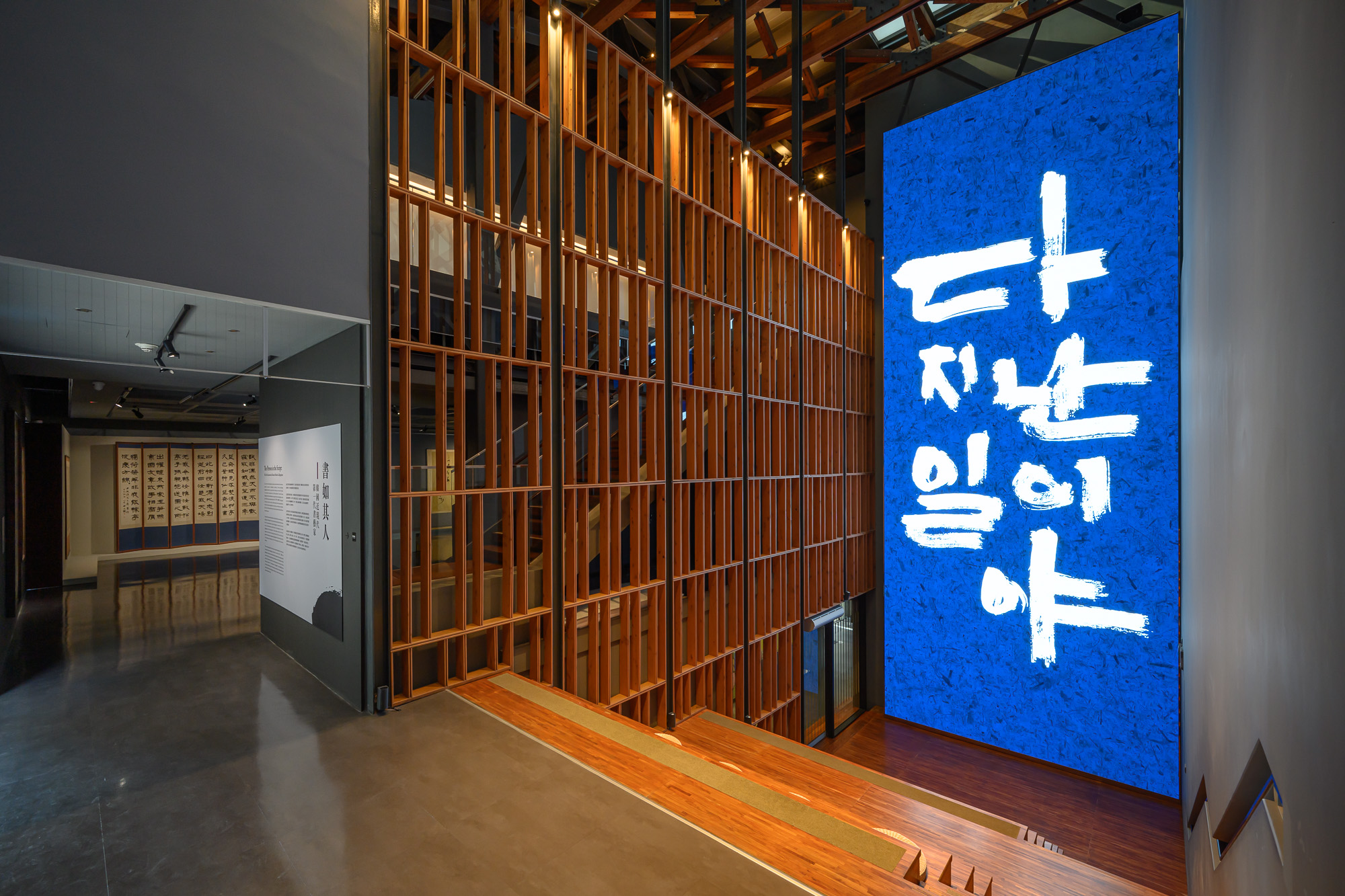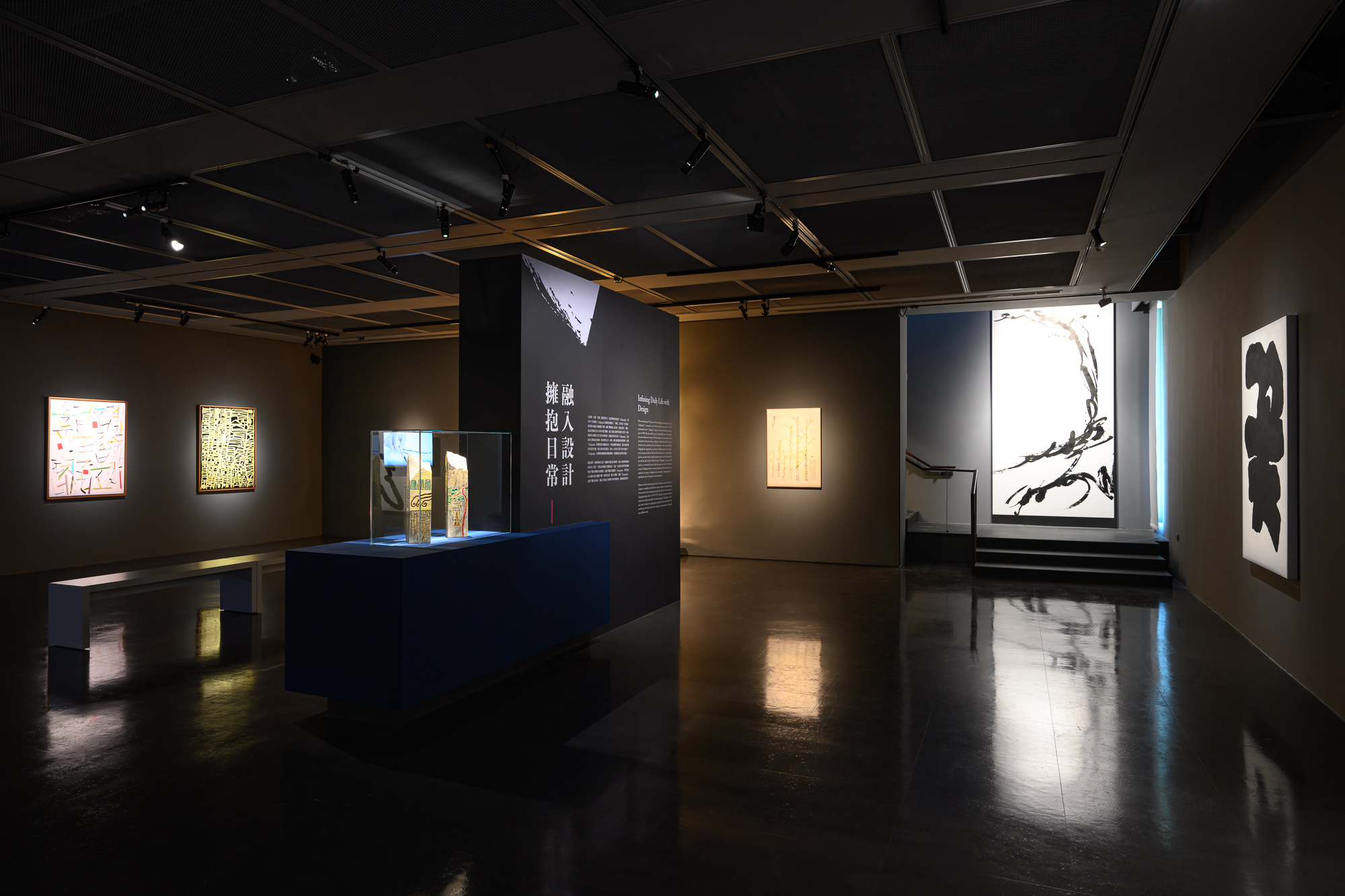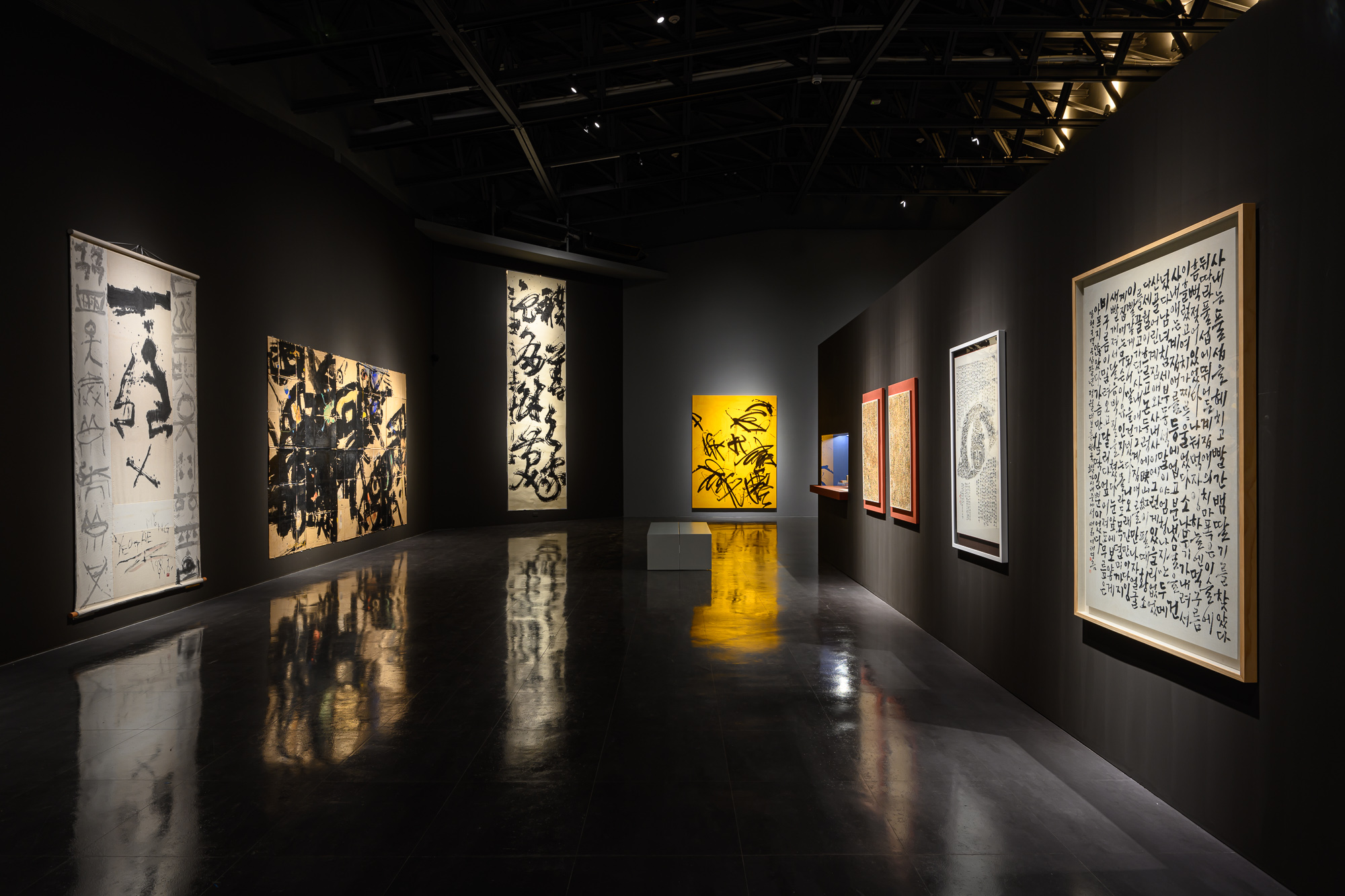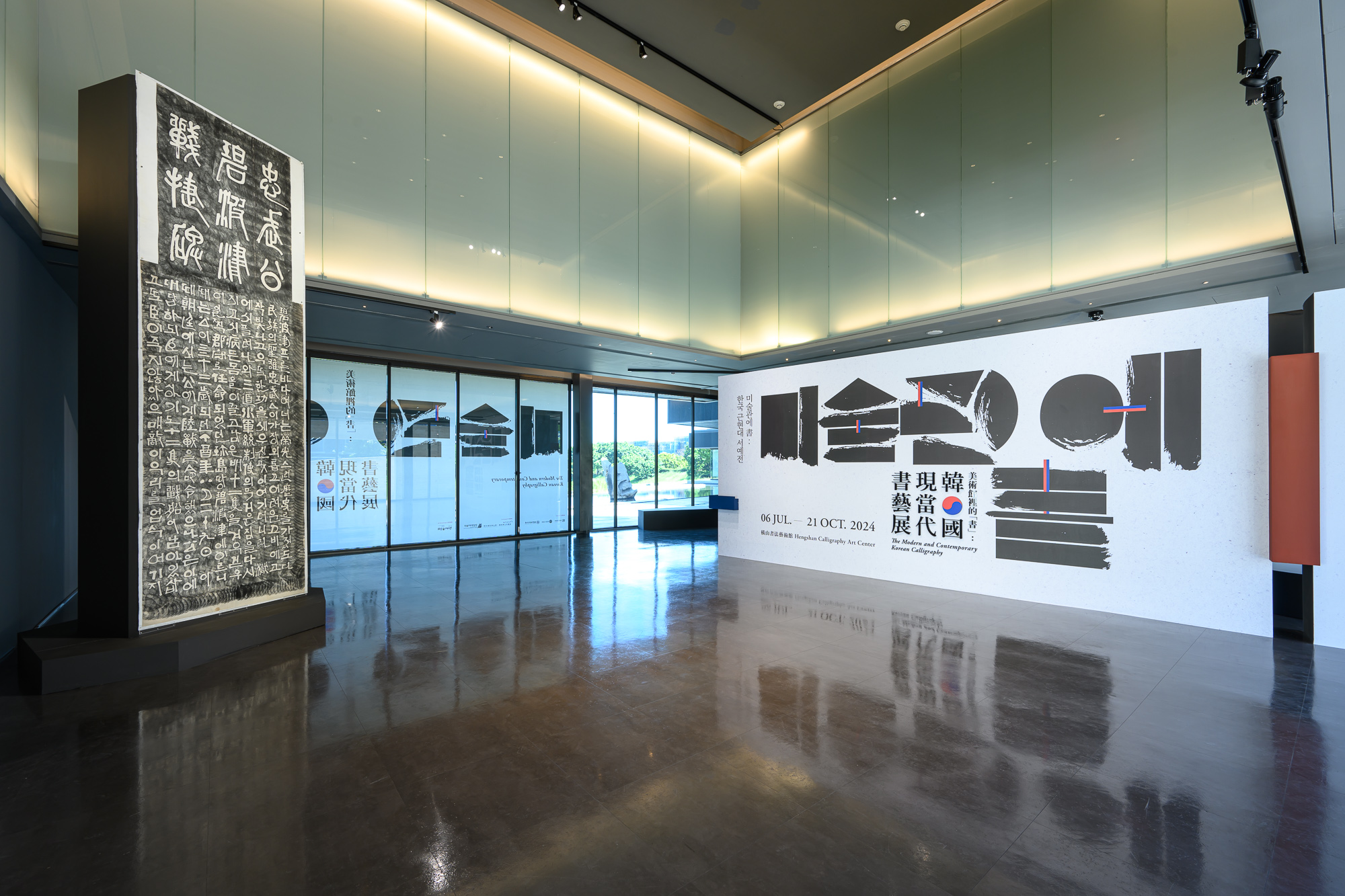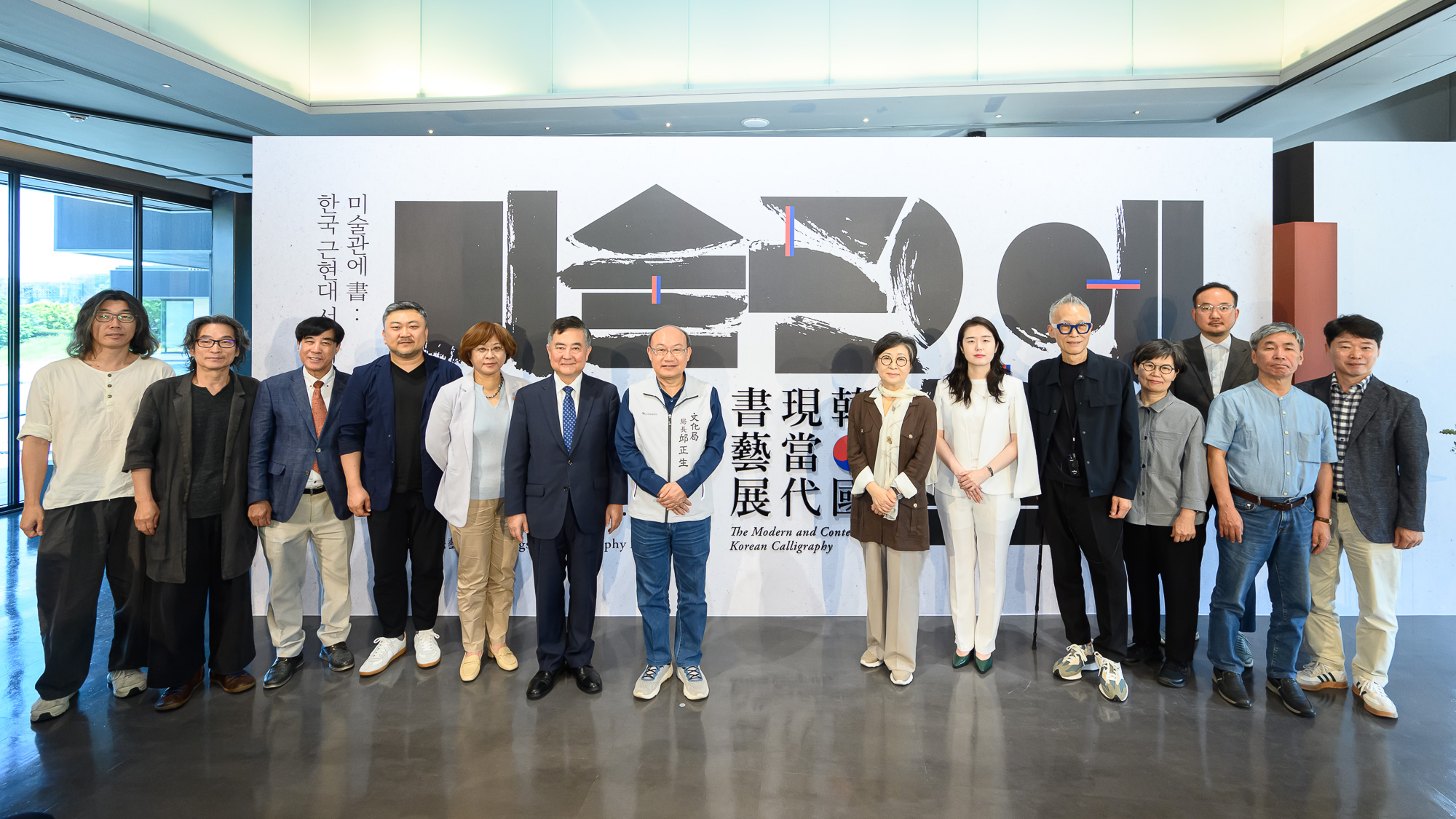Hengshan Calligraphy Art Center and MMCA Jointly Present “The Modern and Contemporary Korean Calligr
From July 6 to October 21, 2024, the Hengshan Calligraphy Art Center (HCAC), the Taoyuan Museum of Fine Arts (TMoFA) branch for calligraphy in Taiwan, in collaboration with the National Museum of Modern and Contemporary Art, Korea (MMCA), will present the exhibition, “The Modern and Contemporary Korean Calligraphy.” This exhibition is the first comprehensive presentation of significant Korean calligraphy works in Taiwan, illustrating the evolution and development of modern and contemporary Korean calligraphy in the 20th century. Aiming to showcase modern and contemporary calligraphy art, HCAC holds various exhibitions featuring a wide range of calligraphy from around the world.
Introducing the Significant Works of Korean Calligraphy to Taiwan
MMCA, renowned as Korea’s only national art museum, specializes in a diverse array of modern and contemporary art. The TMoFA saw The Modern and Contemporary Korean Calligraphy exhibition when it was staged in 2020 at MMCA Deoksugung as MMCA’s first-ever online exhibition due to the COVID-19 pandemic, and immediately extended the invitation that led to this year’s exhibition in Taiwan. Recognizing the scarcity of comprehensive exhibitions and research on Korean calligraphy in Taiwan, TMoFA has collaborated with MMCA, borrowing works from various Korean institutions to organize this major exhibition after three years of planning.
The exhibition focuses on the development and transformation of Korean calligraphy after World War II. It marks the first systematic presentation of Korean modern and contemporary calligraphy achievements in Taiwan’s public museums. Featured works include culturally significant works, such as Son Jae-hyeong's A Rubbing of the Stele Commemorating Admiral Yi Sun-sin’s Victory at Byeokpajin Ferry, Kim Choonghyun’s Song of Dosan by Jo Seong-sin, and Lee Ungno’s I Ching 64 Hexagrams Sequence, offering a rare opportunity to view these significant works.
Understanding the Calligraphy in Korea
Divided into four thematic sections, the exhibition displays 95 meticulously selected works, reflecting Korean calligraphers’ inquiries and explorations of “What is Korean calligraphy?” The diverse styles and forms revealed include the entanglements among Korean, Chinese, and Japanese calligraphy, as well as Western modern art, blending classical traditions, Korean nationalism, and modernization. The exhibition demonstrates the dialectical relationship between “calligraphy” and “art,” exemplifying the vibrant facets of modern and contemporary Korean calligraphy.
Starting from Korea’s liberation in 1945, the exhibition traces the development of Korean calligraphy, highlighting how it diverged from the Japanese-influenced term “shodo” (way of calligraphy) to adopt “seoye,” (art of calligraphy) emphasizing the artistic nature of Korean calligraphy. Concurrently, the widespread use of Hangul led to the development of unique aesthetic characteristics in Korean calligraphy.
The Interaction between Calligraphy and Abstract Art
As the term “Seoye” (art of calligraphy) gained acceptance in Korea, the relationship between calligraphy and art became a central theme for calligraphers. The exhibition presents the transformation of calligraphy from a literary art to a visual art form, with classical calligraphy being reinterpreted with an emphasis on innovation and creativity. The introduction of Western modern art, particularly abstract art, influenced Korean artists to incorporate calligraphic techniques into abstract works. These artists, often trained in traditional calligraphy, integrated elements such as line quality, rhythm, and vigor into modern painting, offering new interpretations of the traditional calligraphic idea that calligraphy and painting share the same origin.
Moreover, the exhibition explores the impact of technology on the evolution of calligraphic strokes, which have become an integral part of branding, film, television, and popular music in Korea. The emphasis on digital font design has also expanded the potential for the development of Korean calligraphy.
The exhibition will open from July 6 to October 21, 2024, at the Hengshan Calligraphy Art Center. Special lectures and promotional activities will be held throughout the exhibition period. For the latest event updates, please visit the official website of the Taoyuan Museum of Fine Arts.
Hengshan Calligraphy Art Center admissions: NT$100; Half price for Taoyuan citizens, students over the age of 18, military personnel, police officers, and firefighters; Free for visitors under 18 or over 65, volunteers with a Volunteer Card, disabled persons, and their guardian, and tour guides.
|
The Modern and Contemporary Korean Calligraphy Date: July 6 to October 21, 2024 (Wed. to Mon. 9:30-17:00, closed on Tuesdays.) Location: The Hengshan Calligraphy Art Center (No. 100, Daren Rd., Dayuan Dist., Taoyuan, Taiwan) Curator: Bae Wonjung, MMCA Artists: Son Jae-hyeong, Hyeon Junghwa, Kim Ki-seung, Yoo Hee-kang, Song Seongyong, Lee Cheolgyeong, Lee Giwoo, Kim Choonghyun, Kim Eunghyun, Seo Hee-hwan, Kwon Chang-ryun, Park Won-gyu, Jung Do-jun, Hwang Sukbong, Choi Minyuel, Kim Jong-won, Yeo Tae-myong, Park Seho, Lee Ungno, Nam Kwan, Kim Ki-chang, Kim Chong Yung, Kim Tschang-yeul, Choi Manlin, Lee Ufan, Lee Cheol Joo, Lee Chung Ji, Lee Kang So, Oh Sufan, Hwang Changbae, Kim Heryun, Chung Byung Ryei, Ahn Sang-soo, Lee Ill-goo, Gang Byung-in, Kim Zhongkun, Lee Sang-hyun. Supervisors: Taoyuan City Government, Taoyuan City Council, Department of Cultural Affairs, Taoyuan City. Organizers: Taoyuan Museum of Fine Arts | Hengshan Calligraphy ArtCenter, National Museum of Modern and Contemporary Art, Korea Sponsor: Membership Society for MMCA, Korea |
